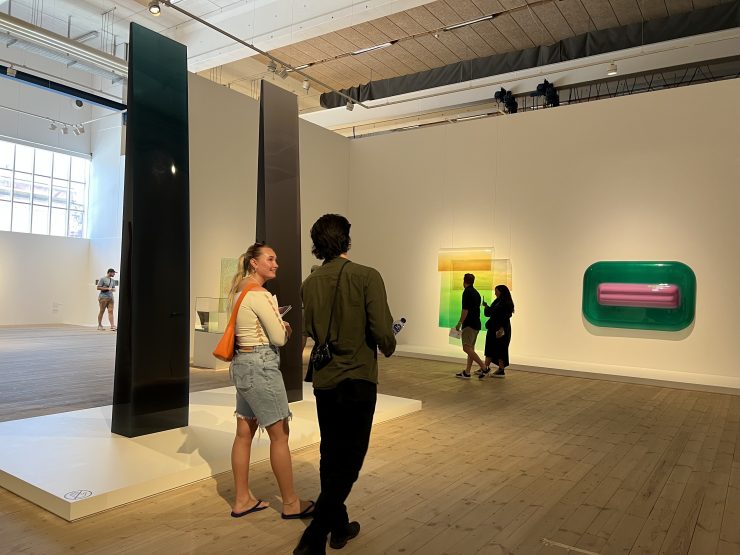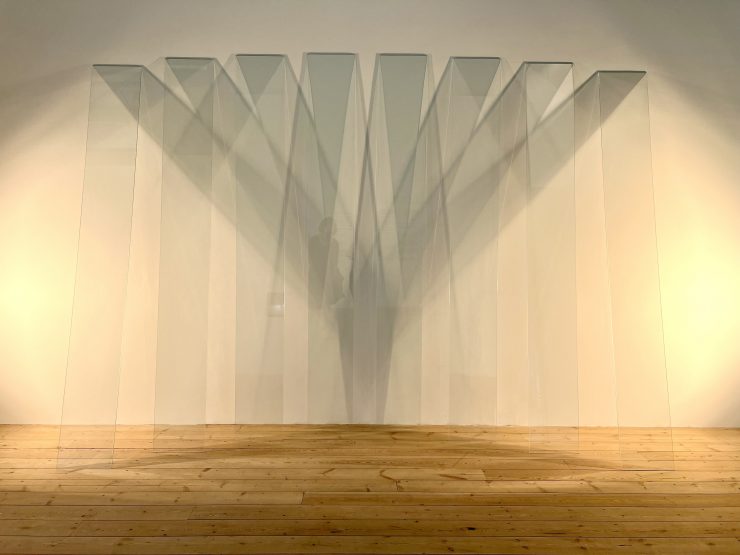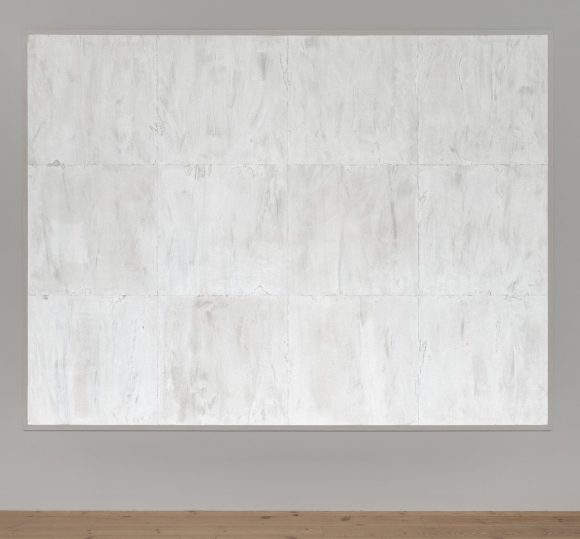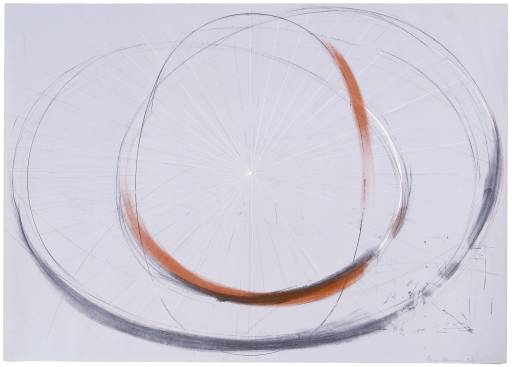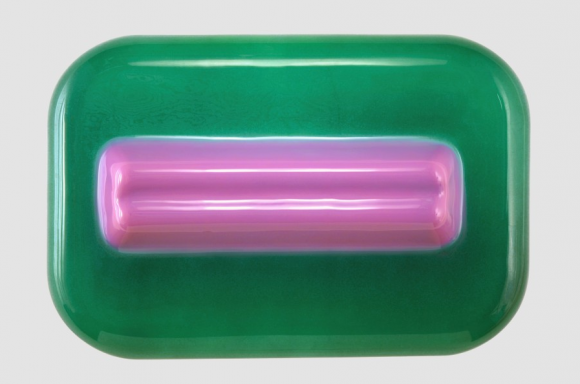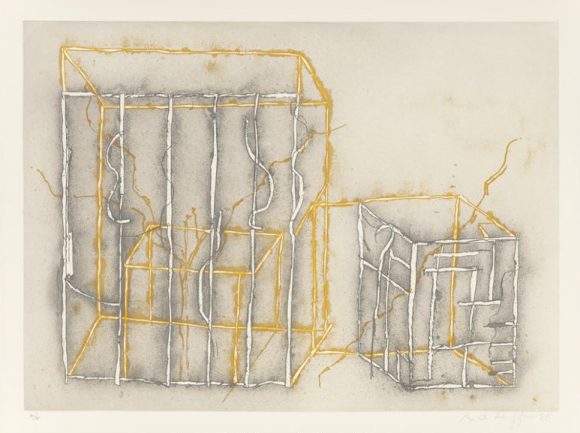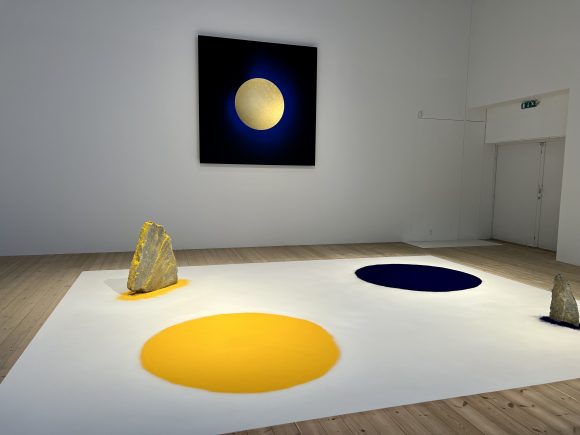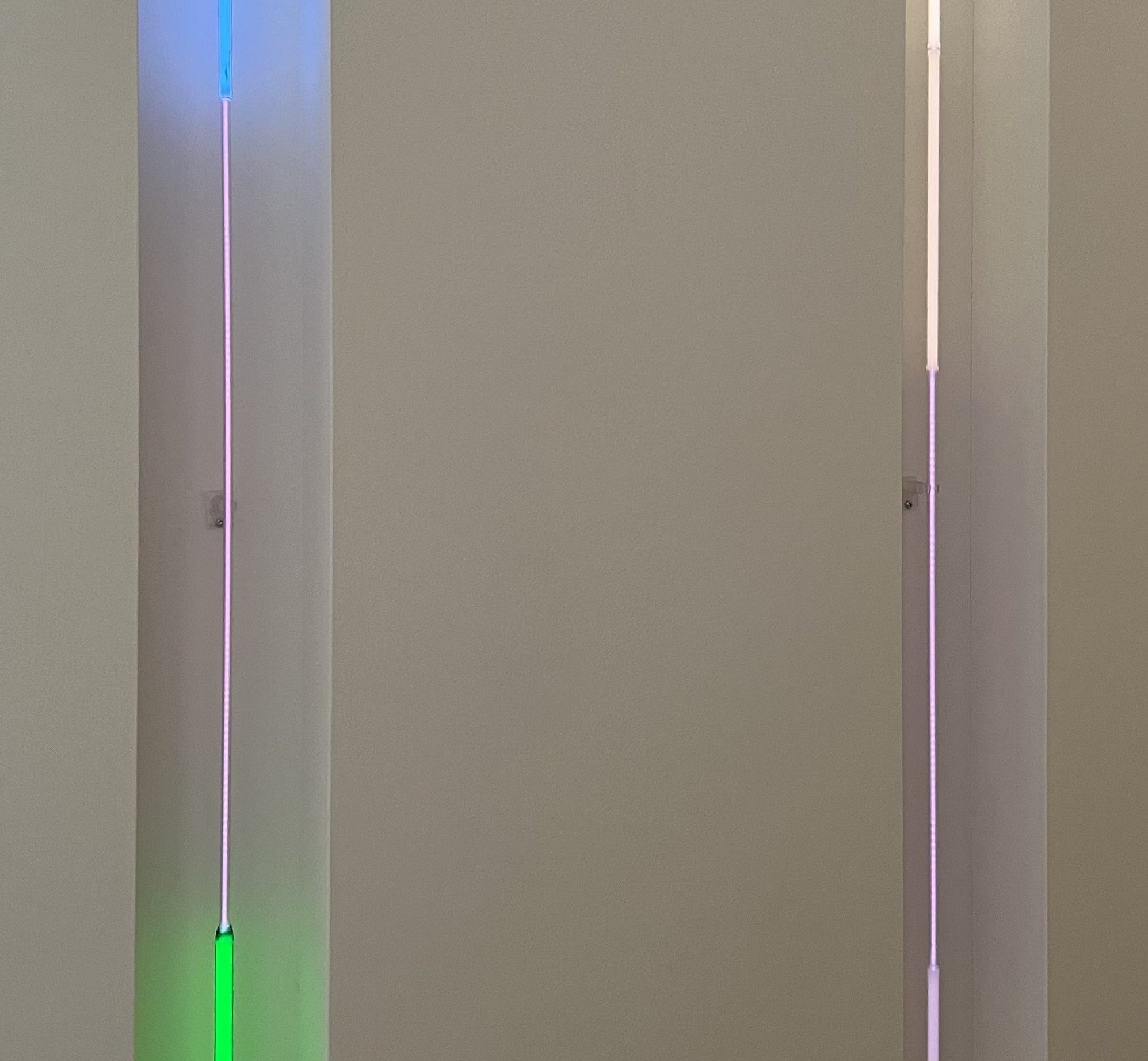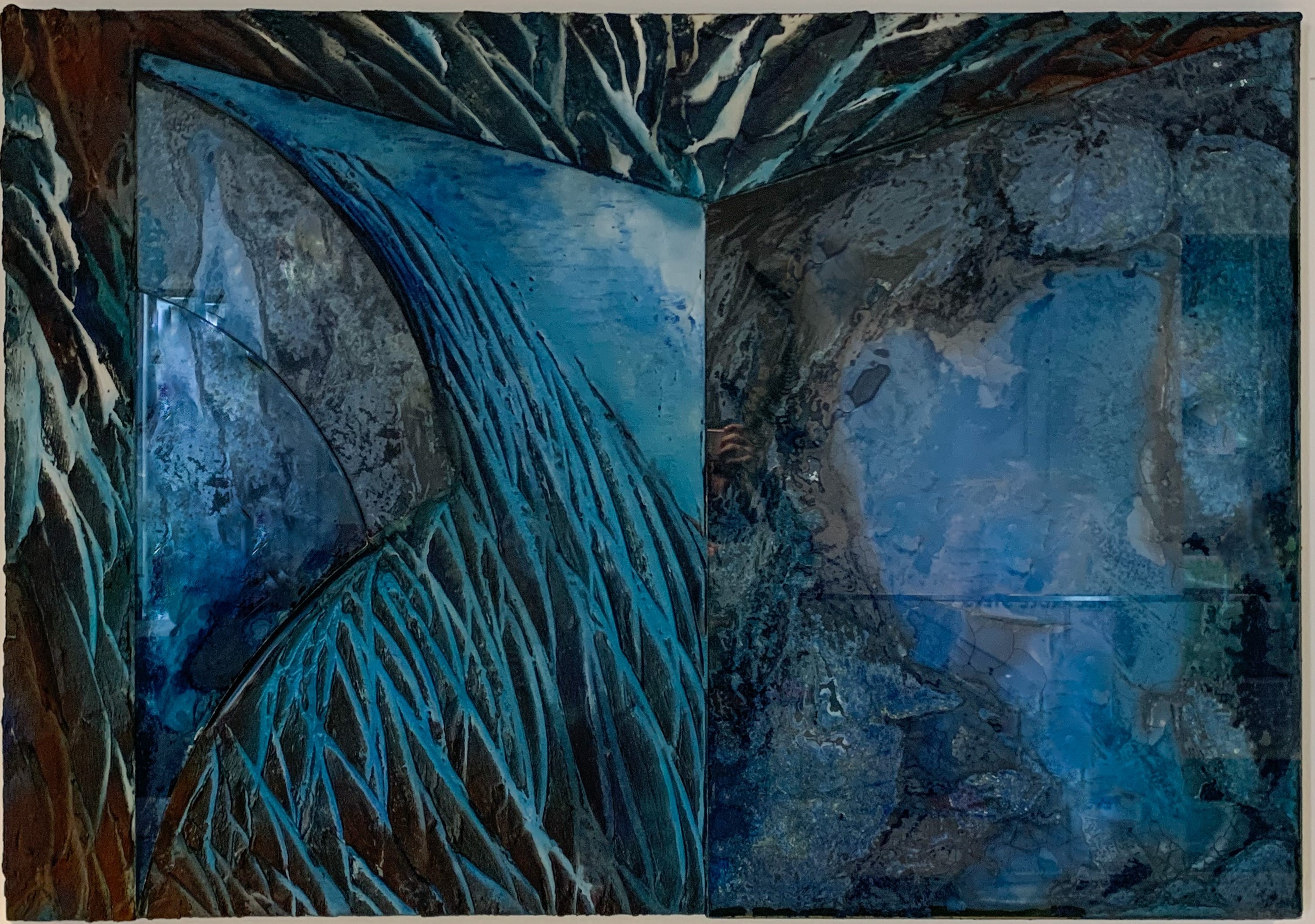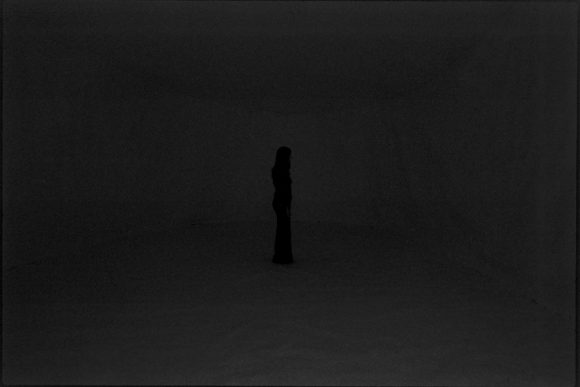Escalette Collection Featured in International Exhibition
August 25, 2022
Almost a year ago, we announced that one of the most well-known paintings in the Escalette Collection – Untitled by Mary Corse – was going to be on loan to Copenhagen Contemporary in Copenhagen, Denmark. This summer, we were so fortunate to be able to go to Copenhagen to see our painting in their landmark exhibition about the Light and Space Movement. We’d like to share our amazing experience at Copenhagen Contemporary and some of the artists we saw there.
About Copenhagen Contemporary
Copenhagen is the ideal city for anyone who’s interested in art and museums. There are countless museums, galleries, and installation spaces devoted to contemporary art in the city and surrounding areas. Copenhagen Contemporary (CC) is a relatively new addition to an already impressive roster of museums. Founded in 2016, it was specifically created to house large-scale exhibitions and installations and is one of the largest display spaces in Scandinavia. The scale of the exhibition space didn’t disappoint. Housed in an old welding hall in the historic industrial and shipping district called Refshaleøen, Copenhagen Contemporary has just over 7,500 square feet of space filled with art.
About the Exhibition
It might seem a bit surprising that an exhibition about Light and Space – a movement entrenched in Southern California – would find its way to Copenhagen. In fact, Light & Space is the first exhibition of its kind in Europe. While CC did an excellent job honoring the traditional Light and Space Movement, it was their fresh take that we most appreciated. Light & Space sought to expand the narrow, often male-dominated focus of the Light and Space Movement to highlight the contributions of women and other artists since the 1960s and 70s. They also included several Danish and European artists to illustrate how the Light and Space Movement influenced artists outside the United States. The range of artists engaged with the questions central to the Light and Space Movement – color, light, space, material – was fascinating. Overall, Light & Space showed how rich of an experience awaits us when we expand our expectations.
- Gallery space in Copenhagen Contemporary
- Installation of watercolors and drawings by Danish artist Ann Linn Palm Hansen.
- Glass installation by Elyn Zimmerman
Escalette Artists in the Light & Space Exhibition
Mary Corse
Of course, the star of the show for us was seeing our Mary Corse painting in the exhibition. This work is an extension of Corse’s experimentation with applying tiny glass beads (similar to the ones used to create reflective street signs) to her canvases. Her technique causes her works to come alive and change depending on the light they are exposed to. Untitled is normally on display in the 3rd floor study lounge in Beckman Hall, where it’s surface is highlighted by the diffuse natural light that comes in from the surrounding windows. At Copenhagen Contemporary, our Corse was displayed under a dramatic spotlight in a way that exaggerated its texture and reflective qualities in a really beautiful way. Two other Mary Corse works were included in the show: one was a glass bead painting (2018) and the other was one of her Tesla coil lightboxes. Corse, who has a degree in electrical engineering, developed the technology for this work based on the design by physicist Nikola Tesla so that power is generated within the work itself rather than from an outside power source.
Walking through the exhibition at Copenhagen Contemporary, we were pleasantly surprised to see several other familiar names. Each of these artists is also represented in the Escalette Collection.
Bruce Nauman – worked alongside Light and Space artists and was interested in space, body, and perception. The work on display at CC, Manipulating a Fluorescent Tube, shows Nauman sitting in his California studio with a fluorescent tube between his legs. In this performance, Nauman’s studio becomes a stage as he manipulates the light through various movements and gestures. The Escalette Collection has two prints by Bruce Nauman that demonstrate his continued interest in conceptualizing and representing space.
- CC: Bruce Nauman, Manipulating a Fluorescent Tube, 1969. Single-channel video, b/w and sound.
- Escalette: Bruce Nauman, Untitled (Gray), lithograph, 1971. Gift of the Steinmetz Family Collection.
Craig Kauffman – is a well-known Light and Space artist whose work explores the boundaries between painting and sculpture. CC displayed one of his wall reliefs made from experiments using industrial vacuums and cast acrylic plastic. The Escalette Collection has two lithographs by Kauffman that capture continued interest in merging two and three-dimensional formats to play with perception.
- CC: Craig Kauffman, Untitled, Acrylic lacquer on plastic, 1969.
- Escalette: Craig Kauffman, CK-1, Etching in colors on wove paper, 1988. Gift of BNY Mellon Center
Lita Albuquerque – emerged in the 1970’s as a Light and Space artist. Her site-specific installations speak to her interest in the materialization of light in nature. The work on display at CC, Materia Prima, is part of a larger body of work from the 70s when Albuquerque worked in the Southern California landscape, using pigments to investigate the relationship between Earth and other celestial bodies. At Chapman, the Fish Interfaith Center has an installation that also features Albuquerque’s signature golden disc, a motif that recalls celestial orbs and the sense of infinite time, light, and space in the universe.
- CC: Lita Albuquerque, Materia Prima, rocks and pigments, 1979/2021.
- Escalette: Lita Albuquerque, Stellar Score, Mixed media, 2004.
Laddie John Dill – was a member of the Light and Space Movement who worked with light, space, and earth materials, inspired by landscapes and geological formations. CC displayed some of Dill’s neon sculptures – long, narrow, luminous glass tubes that emit light of different hues and intensities. The gases inside each section of the piece determine the color of the light; for example, argon produces a purple color. We are fortunate to have two sculptures and one print by Laddie John Dill in the Escalette Collection. Made of minerals and natural oxides, the sculptures capture Dill’s interest in geology and deep time.
- CC: Laddie John Dill, Untitled Light Sentence), 1969.
- Laddie John Dill, Untitled, Cement, glass, ground minerals and natural oxides in a cement emulsion, cement & polymer on edges, 1985-1995. Gift of Ken and Sandy Tokita.
Eric Orr – was driven by a strong interest in spiritual and phenomenological matters, exploring concepts like space and time, and the physical properties of the natural world. CC’s exhibition included Orr’s 1969 installation Zero Mass, an oval room whose floor, ceiling, and walls are made of photographic paper. When you first step into the room, you experience total and complete darkness, but after about 10 minutes, your eyes start to adjust and you can begin to make out silhouettes in the void. The Escalette Collection has two paintings by Orr which capture his fascination with Egyptian symbolism and alchemical reactions. These paintings were created using gold and lead – two of the oldest and most essential metals in alchemy – as well as human blood.
- CC: Eric Orr, Zero Mass, Paper, plywood and electric light, 1972-73.
- Escalette: Eric Orr, Time Shadow, Oil on linen, gold-leaf, lead, and blood, 1989. Gift of Anton Segerstrom
We invite you to explore all the works in the Escalette Collection by visiting our eMuseum.
Wilkinson College of Arts, Humanities, and Social Sciences is the proud home of the Phyllis and Ross Escalette Permanent Art Collection. The Escalette Collection exists to inspire critical thinking, foster interdisciplinary discovery, and strengthen bonds with the community. Beyond its role in curating art in public spaces, the Escalette is a learning laboratory that offers diverse opportunities for student and engagement and research, and involvement with the wider community. The collection is free and open to the public to view.


